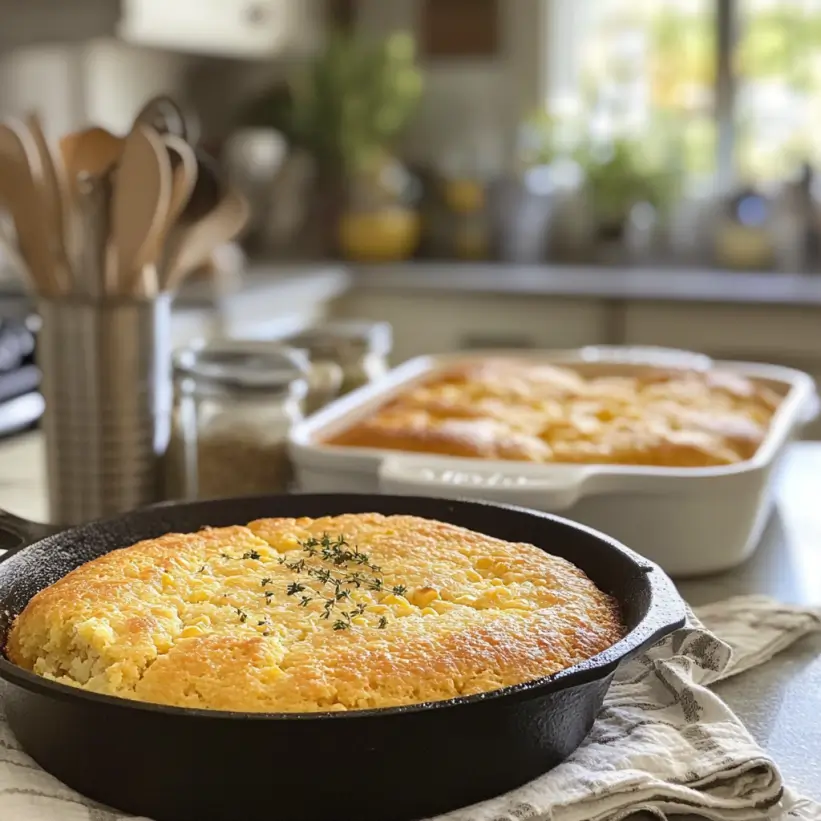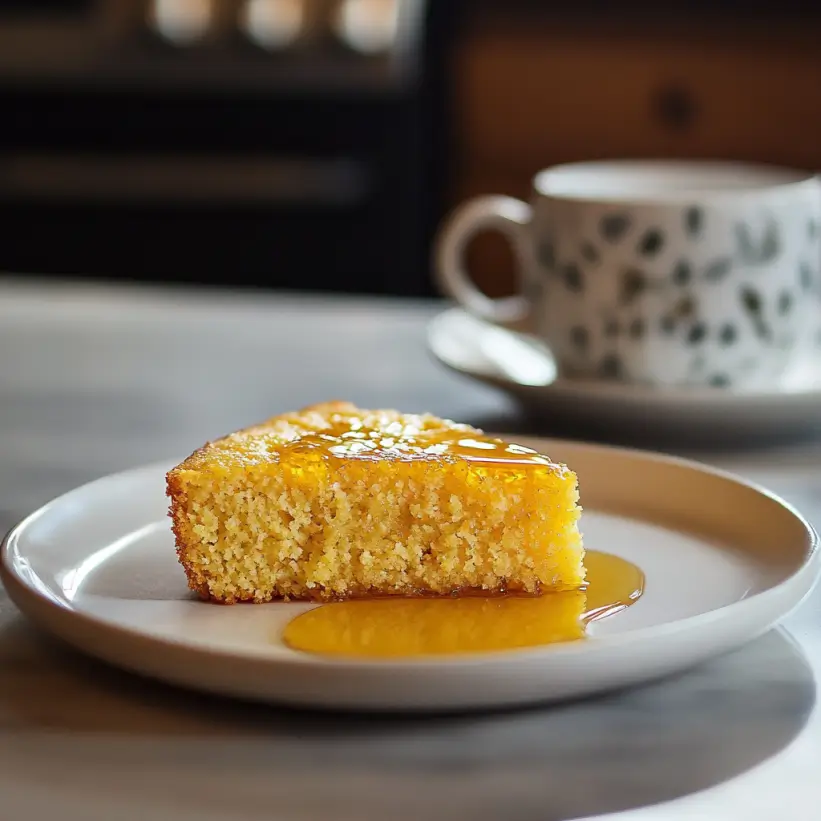Introduction
Cornbread, a favorite in American cooking, comes in two main styles: Northern and Southern. While they share the same base, they taste, feel, and are made differently. Knowing what is the difference between cornbread and Southern cornbread helps us see how history and location shape our food.
In this article, we’ll look at their history, ingredients, how they’re cooked, and how they taste. By the end, you’ll know how these styles are unique and how to make both kinds at home. Let’s get started.
Table of Contents
Part 1: Origins and History of Cornbread
The Roots of Cornbread
Cornbread started with Native Americans, who used ground corn to make simple, filling dishes. When Europeans arrived, they changed these recipes into what we now call cornbread. This bread became a common food in early American homes because it was cheap and easy to make.
How Regional Styles Developed
As people moved across the country, they adjusted how they made cornbread based on what they had. Northern cornbread became sweeter and lighter because sugar and wheat were easy to find. Southern cornbread, however, stayed savory and simple because those ingredients were harder to get.
It wasn’t just the food supplies that shaped cornbread; traditions and tastes mattered too. Southerners kept things simple, while Northerners liked to try new ideas in cooking, which led to very different versions.
Why It’s Important
Cornbread is more than just a side dish. In the South, it’s part of family meals, holiday gatherings, and even stories of survival during tough times. Southern cornbread is often served with greens or beans, while Northern cornbread is paired with sweet or rich foods. Each kind has a special place in its region’s cooking and culture.
Cultural Significance
Cornbread is more than food—it’s a cultural symbol. In the South, it’s deeply tied to family meals, holiday traditions, and even historical resilience during tough economic times. Southern cornbread often accompanies collard greens and beans, staples of soul food. In the North, it complements hearty stews and baked dishes, embracing a sweeter touch that reflects the region’s broader culinary influences.
Part 2: Key Ingredient Differences
Cornmeal Types

The type of cornmeal you use makes a big difference in cornbread. Southern cornbread often uses white cornmeal, which has a mild flavor and soft texture. On the other hand, Northern cornbread usually uses yellow cornmeal, which tastes a little sweeter and has a richer flavor. This choice affects not just how the bread tastes but also how it feels when you eat it.
Adding Sweeteners
One of the biggest differences in what is the difference between cornbread and Southern cornbread is whether or not to add sugar. Southern recipes don’t usually include sugar, keeping the bread savory and simple. Northern recipes, however, add sugar, honey, or molasses, making the bread sweeter and more like a dessert. This reflects Northern cooks’ love for sweeter baked goods.
Using Fats and Eggs
The choice of fats and eggs also changes the texture of cornbread. Southern recipes often use buttermilk and lard, giving the bread a moist and dense feel. Northern recipes tend to use regular milk and butter, making the bread lighter and fluffier. These small changes show how the same dish can turn out so differently.
Part 3: Preparation and Cooking Techniques
Traditional Southern Cornbread Techniques
When it comes to preparation, Southern cornbread stays true to its roots with simple yet effective methods. A hallmark of this style is the use of a cast iron skillet, which delivers a crisp, golden crust while keeping the interior tender and moist. Preheating the skillet in the oven before adding the batter is a must. This step ensures an even, crunchy exterior—a trademark of authentic Southern cornbread.
Additionally, Southern recipes emphasize minimal mixing to avoid overworking the batter. This practice preserves the crumbly, dense texture that defines this bread. Ingredients like buttermilk and lard not only enhance flavor but also contribute to the bread’s rich texture.
Northern Cornbread Preparation
On the flip side, Northern cornbread takes a lighter approach, both in flavor and preparation. Unlike its Southern counterpart, it’s often baked in standard cake pans or baking dishes. This method yields a softer crust, in keeping with its cake-like nature.
Northern recipes typically involve creaming butter and sugar together before folding in the cornmeal and flour. This technique introduces air into the batter, resulting in the fluffy texture Northern cornbread is known for. The addition of baking powder or baking soda ensures a good rise, making the bread airy and light.
Cooking Variations
Both styles offer opportunities for culinary creativity. For example, Southern cornbread often includes savory additions like cheese, jalapeños, or bacon, adding layers of flavor and texture. Meanwhile, Northern cornbread enthusiasts might sweeten the deal by incorporating honey or fresh fruits like blueberries.
Each of these cooking methods reflects the essence of what is the difference between cornbread and Southern cornbread. While Southern cornbread celebrates simplicity and tradition, Northern cornbread leans into a more versatile and experimental approach.
For more inspiration, explore delicious recipes that showcase unique cooking techniques on Simply Yummy. Whether you’re a fan of savory dishes or sweet delights, you’ll find something worth baking!
Part 4: Flavor and Texture Comparisons
Taste Differences

One big part of what is the difference between cornbread and Southern cornbread is how they taste. Southern cornbread has a savory flavor, often with a slight tang from buttermilk. It pairs well with rich, hearty dishes like beans or greens.
Northern cornbread, on the other hand, is sweeter. The added sugar, honey, or molasses gives it a dessert-like quality that goes well with buttery toppings or baked beans. These differences in flavor show how each style has its own unique charm.
How They Feel
The texture of each type is also very different. Southern cornbread is dense and crumbly, often with a crisp crust made in a cast iron skillet. This makes it perfect for soaking up the juices from soups or stews.
Northern cornbread is light and fluffy, with a soft, cake-like feel. This texture comes from the extra sugar and leavening agents, like baking powder, used in its recipes. Each style’s texture matches its taste, creating a complete experience.
How to Enjoy Them
Southern cornbread’s savory taste is best with spicy or tangy foods, like chili or collard greens. Northern cornbread, with its sweet flavor, goes well with honey butter or maple syrup. Both styles offer endless ways to enjoy them, whether as a side dish or a snack on their own.
Why isn’t sugar used in Southern cornbread?
Sugar is often left out of Southern cornbread because it has always been made as a savory dish. In the past, sugar wasn’t easy to get in the South, so cooks used simple ingredients like lard and buttermilk. Even today, many believe sugar changes the traditional taste. This difference is a big part of what is the difference between cornbread and Southern cornbread.
Can you swap yellow cornmeal for white cornmeal?
Yes, you can use yellow cornmeal instead of white cornmeal, but it will slightly change the flavor and look. White cornmeal, used in Southern cornbread, has a soft, mild taste. Yellow cornmeal, common in Northern cornbread, is sweeter and richer. For an authentic result, stick to the type used in the recipe.
What is the best pan for Southern cornbread?
The best pan for making Southern cornbread is a cast iron skillet. It gives the bread a crispy crust and helps it bake evenly. Preheating the skillet before adding the batter is key to achieving this signature crust. This step is one reason Southern cornbread is different from Northern styles, which are often baked in regular pans.
How can I make Northern cornbread moister?
To make Northern cornbread moister, you can add ingredients like sour cream, yogurt, or applesauce. These additions make the bread soft without changing its flavor too much. Mixing the batter gently also helps keep the texture light and fluffy. These tips are useful for anyone curious about what is the difference between cornbread and Southern cornbread and wanting to try both.
Conclusion
Understanding what is the difference between cornbread and Southern cornbread gives us a deeper appreciation for these cherished dishes and their regional roots. While both styles share a foundation in cornmeal, they diverge in flavor, texture, preparation, and cultural significance.
Southern cornbread is a celebration of savory simplicity, often dense and paired with hearty meals. On the other hand, Northern cornbread embraces a lighter, sweeter profile, making it as versatile as it is delicious. These differences reflect the rich culinary traditions of their respective regions and highlight how ingredients and methods shape food in meaningful ways.
Whether you prefer the crisp edges of Southern cornbread or the cake-like softness of Northern cornbread, both styles offer a unique taste of history and culture. By exploring these variations, you can bring the best of both worlds to your kitchen and table.
So, why not try making both? Dive into the distinctive flavors and textures that make cornbread a timeless favorite. Whether it’s for a family dinner or a solo experiment, you’ll be delighting in a piece of culinary history.

